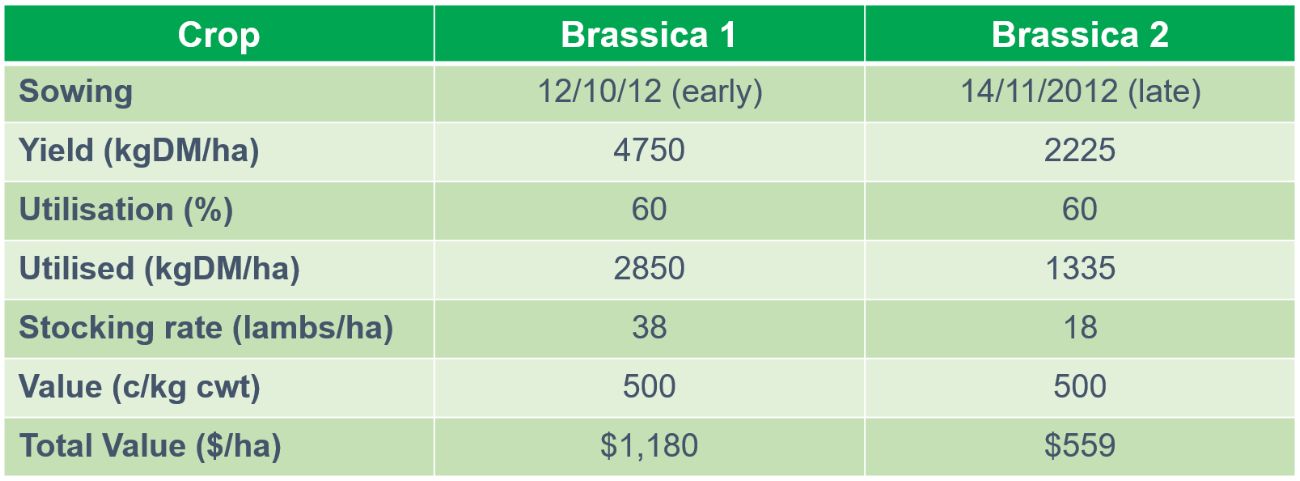Get in Touch
Contact Us
National team

Find Your Local Sales Agronomist
Brassica
Assess pasture to identify poor producing paddocks that require renovation.
Complete soil test 6–8 weeks prior to sowing.
Evaluate soil test results and apply the required fertiliser and lime to the selected paddock. If broadcast sowing, sow with approximately 200kg/ha of superphosphate. If drill sowing, use 80-150kg/ha D.A.P or M.A.P. Nitrogen can be applied three to six weeks after emergence (approximately 80-100kg/ha of Urea). All brassica forage crops respond well to nutrients, especially Nitrogen and Phosphorus. Avoid applying too much Nitrogen and Sulphur to brassica crops as this can negatively impact on animal health.
Weed control is essential, and sowing a forage crop into poorly performing paddocks may eradicate/significantly reduce weed problems in the selected paddock. The best way to try and achieve this weed eradication/reduction is to spray the old pasture with a total knockdown herbicide approximately three weeks before sowing a brassica forage crop. Approximately a week after spraying, ensuring chemical withholding periods are adhered to; graze heavily with stock to remove as much trash as possible as this makes the paddock easier to direct drill into and/or cultivate.
Select the most suitable brassica crop based on:
1. Stock class grazing
2. Level of production required.
3. Maturing time (consider when the first grazing is needed)
4. Required number of grazing’s
5. Rainfall
6. Soil fertility
Prepare a fine, firm seedbed so the seed can be sown at approximately 10–15mm and ensure good seed to soil contact. Apply an insecticide with glyphosate if direct drilling. When direct drilling, monitor slug populations. Drilling in good conditions and using press wheels to close the drill slot will lower the risk of creating a habitat for slugs to live if drill slots are left open.
Prevent insects during establishment using Ultrastrike® brassica seed treatment for Red Legged Earth Mite and Cutworm protection. Ultrastrike can give 4-6 weeks of protection during establishment. If slugs and snails are known to be present, apply slug and snail bait at the recommended application rate (an essential step in direct drilling situations in early spring and autumn).

The above table demonstrates the importance of early sowing to maximise returns per hectare on forage brassicas.
This trial was run in a very dry spring year with rainfall well below average from September to February and higher than average temperatures. This highlights the importance of sowing early with available moisture for both forage yield, carrying capacity and subsequently gross returns.
*Stocking rate – based on 50 days grazing; lambs turned off average 40kg lwt, with feed on offer of 2.5kg/head/day and averaged 270g/head/day growth rates.
**Total value – assumption dressing out 46%. The early sowing produced an additional $621/ha over the later sowing.
Note: Market price example of 650c/kg cwt the early sowing would produce an additional $807/ha.
Brassicas do best in a rotation following grass but may be sown after any crop. If sowing after a crop, consideration should be given to herbicides applied during the cropping phase.
As forage brassicas are small seeded, sow into a fine, firm seedbed and ensure good seed to soil contact. Ensure maximum germination by sowing at a depth of 10-15mm (approximately). For best results, sow when soil temperature is 10°C and rising, and moisture levels are adequate for germination. Seed should be drilled or broadcast and rolled into a cultivated seedbed. Avoid broadcasting seed if the soil is dry.
Seed on a dry surface will not germinate until substantial rain (at least 20mm) has fallen. Depending on farm practices, direct drilling/drilling (whether the paddock is cultivated or uncultivated) can also be successful for sowing a brassica crop.
Brassicas are sensitive to water deficiency, especially at establishment. Shallow-rooted crops (leafy turnips, turnips and swedes) are more sensitive, while deep-rooted crops (kale, rape and raphanobrassica) tolerate drought conditions better. Forage brassicas can produce between 20-40kgDM/mm of water used. Ensure adequate time is given when applying knockdown herbicides to allow complete weed kill while conserving soil moisture before sowing a forage brassica.